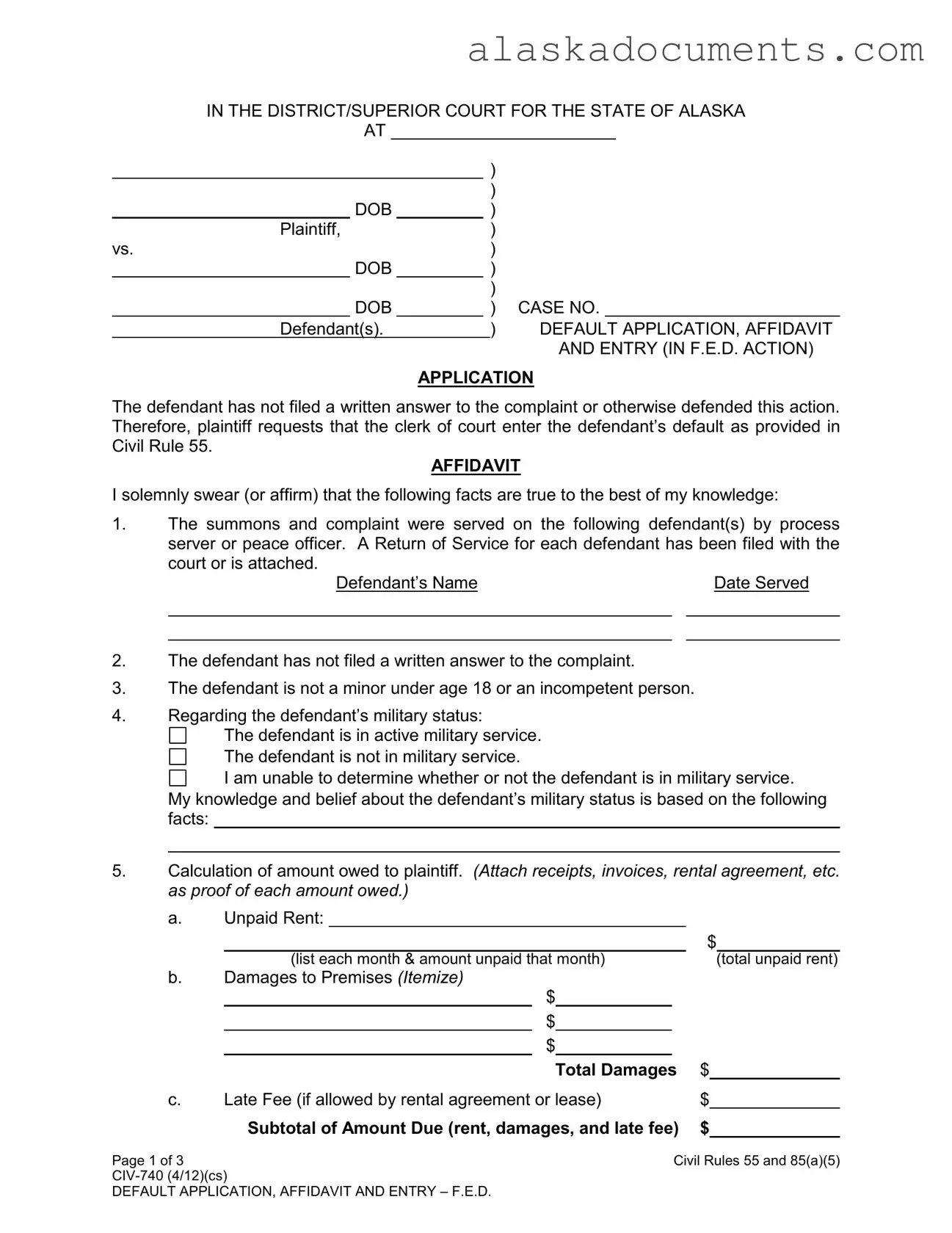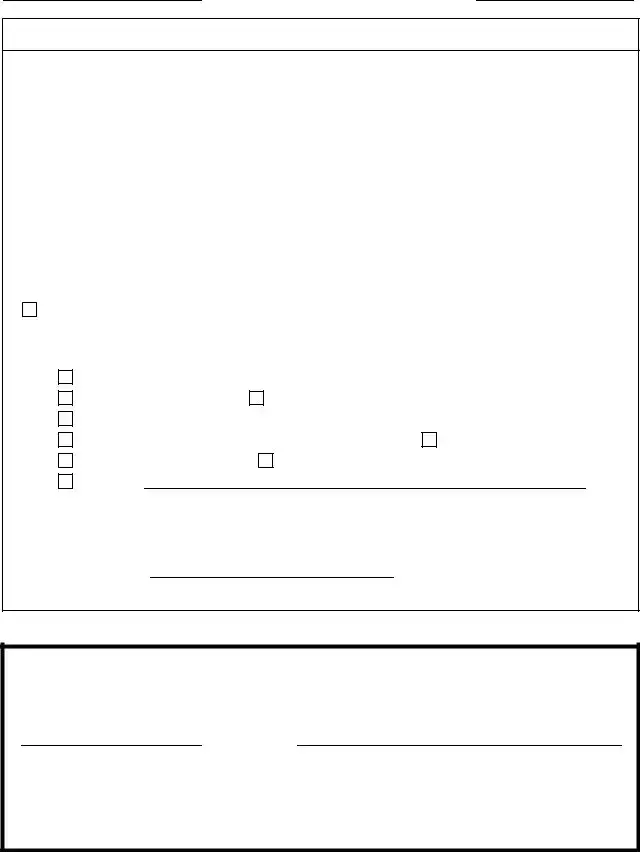The Alaska Civ 740 form is similar to the California Request for Entry of Default (Form CIV-100). Both documents are used in situations where a defendant has failed to respond to a complaint. They allow the plaintiff to request that the court enter a default judgment against the defendant. Each form requires the plaintiff to provide proof of service of the summons and complaint, ensuring that the defendant was properly notified of the legal action. Additionally, both forms necessitate a declaration regarding the defendant's military status, which is crucial for compliance with the Servicemembers Civil Relief Act.
Another comparable document is the New York Request for Judicial Intervention (Form RJI). While this form is typically used to initiate court proceedings, it also serves to establish whether a default should be entered. Both the RJI and the Alaska Civ 740 require the plaintiff to outline the circumstances of the case and the steps taken to notify the defendant. This ensures that the court has all necessary information to make a fair decision regarding the entry of default.
The Texas Motion for Default Judgment is another document that shares similarities with the Alaska Civ 740. In both cases, the plaintiff must demonstrate that the defendant has not responded to the complaint. The Texas motion requires an affidavit stating the facts of the case, much like the affidavit section in the Alaska form. Both documents also require a calculation of damages owed, allowing the court to assess the appropriate amount for a default judgment.
The Florida Motion for Default is yet another similar document. This form is used when a defendant fails to respond to a complaint, allowing the plaintiff to seek a default judgment. Both the Florida motion and the Alaska Civ 740 require the plaintiff to provide evidence of service and detail the amounts owed. They also share a common goal: to expedite the legal process when a defendant does not engage in the proceedings.
The Illinois Motion for Default Judgment aligns closely with the Alaska Civ 740 as well. In Illinois, this motion is filed when the defendant has not answered the complaint. The plaintiff must present evidence of service and a breakdown of damages, similar to the requirements in Alaska. Both forms emphasize the importance of proper notification and the calculation of damages owed to the plaintiff.
In Michigan, the Request for Default Judgment serves a similar purpose. This document is filed when a defendant fails to respond, allowing the plaintiff to seek a judgment without the defendant's input. Like the Alaska form, the Michigan request requires proof of service and a detailed account of damages. Both forms aim to ensure that the plaintiff is not left without recourse due to the defendant's inaction.
The Ohio Motion for Default Judgment is another comparable document. In Ohio, this motion is filed when a defendant does not respond to a complaint, allowing the plaintiff to request a default. Both the Ohio motion and the Alaska Civ 740 require the plaintiff to provide proof of service and a detailed account of damages owed. They both serve to protect the rights of plaintiffs in cases where defendants choose not to participate in the legal process.
Understanding the importance of documentation in legal transactions, similar forms can be essential for various purposes, and one such example is the Bill of Sale form, which details the exchange of ownership between parties. For further insights into this crucial document, you can refer to https://onlinelawdocs.com/bill-of-sale/.
The Washington Motion for Default Judgment is similar as well. This document is used when a defendant has failed to respond, enabling the plaintiff to seek a default judgment. Both the Washington motion and the Alaska Civ 740 necessitate proof of service and a breakdown of damages. They are designed to streamline the process for plaintiffs when defendants do not engage with the court.
Finally, the Nevada Request for Entry of Default mirrors the Alaska Civ 740 form. This document is utilized when a defendant has not answered a complaint, allowing the plaintiff to request a default. Both forms require proof of service and a detailed account of damages owed. They are essential tools for plaintiffs seeking to move forward when faced with a non-responsive defendant.



 I am unable to determine whether or not the defendant is in military service. My knowledge and belie
I am unable to determine whether or not the defendant is in military service. My knowledge and belie
